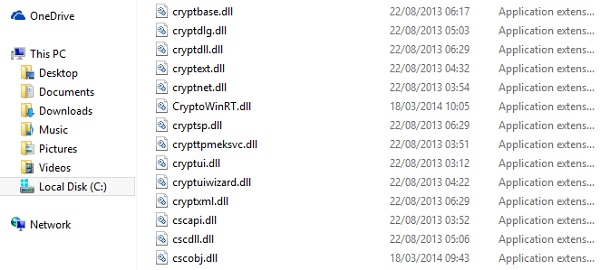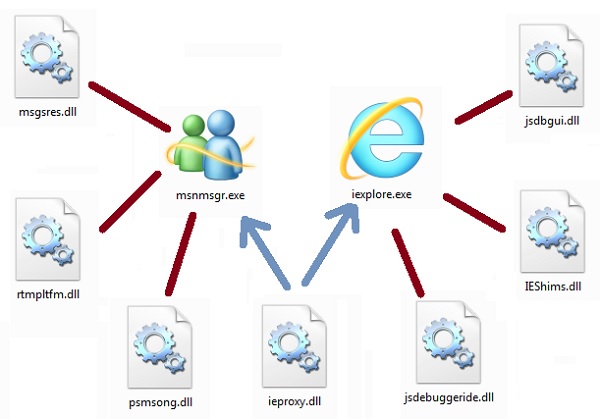
You might have to experience the situation where you came across DLL files that do not work with the given software due to some lack of .dll files. Once you get this information you start looking for the solution on the Internet to get that DLL file, place it in correct folds and get the software running. And that’s it – problem solved about DLL files.
Yet, it should be interesting to know more about these files. They look important, as their absence does not allow a program to run, so get to know what is a dll file and how does dll works?
Go through this article and get information about DLL files and how dll works?
What are DLL files?
DLL stands for “Dynamic-Link Library”, and it is Microsoft execution of the shared library concept in the Microsoft Windows and OS/2 operating systems. They are equally important as EXEs but given a different name for clarity in the linking process.
However, the DLL file cannot be implemented directly and therefore tools like rundll.exe and rundll32.exe are required.

DLL files are the ways for a developer to use shared code and data, allowing them to upgrade software functionalities without the required of re-link or re-compile.
In simple word DLL file store the code and data that is used by various different software. A single DLL file can be used by different software, if they supposed to need it, eradicating the need for several copies of the same information.
How do DLL Files Work?
Visualize two different files – “example.exe,” a common executable file, and “library.dll,” a DLL file that is by that executable. How these both files are connected by the operating system when “example.exe” runs?

When “example.exe” runs the OS loads it and locates a table of data within it, affirming that “this program uses the following list of functions from the DLL file library.dll” which is technically known as “imports” or “imported functions” from the DLL “library.dll” in the program “example.exe.”
After that, the loader code looks for “library.dll” and if it locates it, the file gets loaded. Inside these DLL files, there is another list known as “export list”, which joins particular addresses to each of the functions inside the DLL file.
From this point of time, when “example.exe” requires to call a function from “library.dll.” it simply uses that address.
What if you got a problem when performing a program? Two alike ways are there to solve the problem. Many times, the DLL files that are missing are a part of Microsoft .Net Framework, in order to fix it, you can simply reinstall and download this component.
If in case the file does not fit in this framework then you can search the specific file for DLL and get it to download it from the authority file base online.
How to Get and Store DLL Files?
When any software lacks a DLL file, the normal approach is to search that file online and store it incorrect folder in our hard drive and the software will work fine, but as I earlier mentioned above that various software might require that file, so it is better to put in where they all can get it. So, the “System32″ folder (C:\Windows\System32). x64 users should also copy the DLL file to “C:\Windows\SysWOW64″ and both these operations required Administrator privileges to perform.
However, this solution is not recommended to everyone as it may bring some risks like virus infection, outdated DLLs, and so on.
Some Common DLL File Names
mfc42u.dll – MFC (Microsoft Foundation Class). This DLL file is included in Windows 7, XP, and Windows Vista.
It is located in C:\Windows\System32\ directory. If you find this dll file missing due to installation of Windows is damaged. Simply perform a system restore to fix it.
mfc80u.dll – This is created with Visual C++ 2005 for some Windows programs. If you found this file missing, install Microsoft Visual C++ 2005 Redistributable Package.
This package includes msvcm80.dll, mfcmifc80.dll, msvcr80.dll, mfc80.dll, mfcm80.dll, and msvcp80.dll.
mfc90u.dll – This is created with Visual C++ 2008 for some Windows programs. If you found this file missing, install Microsoft Visual C++ 2008 Redistributable Package.
This package includes msvcm90.dll, mfcmifc90.dll, msvcr90.dll, mfc90.dll, mfcm90.dll, and msvcp90.dll.
mfc100u.dll – This is created with Visual C++ 2010 for some Windows programs. If you found this file missing, install Microsoft Visual C++ 2010 Redistributable Package.
This package includes msvcm100.dll, mfcmifc100.dll, mfc100.dll, msvcr100.dll, mfcm100.dll, and msvcp100.dll.
Automatic Solution for DLL Files
As I have mentioned above some of the common names of DLL files, there are more of it that go missing and causing the problem and preventing you from performing any task.
If you encounter any issues related to DLL files or face DLL errors then you can overcome those simply with the help of the DLL Repair Tool.
Instead of taking a risk and downloading DLL files from different sites, try this tool it will automatically repair DLL files and fix DLL errors without the need of any professional.
Get DLL Repair Tool to Fix DLL files and Errors
Conclusion
Well, that’s all about DLL files.
I hope you get the knowledge about what is dll, how dll works, some common names of DLL files, and how to store DLL files.
Despite this, if you are having any questions related to this article then leave them in the below comment section.
Hardeep has always been a Windows lover ever since she got her hands on her first Windows XP PC. She has always been enthusiastic about technological stuff, especially Artificial Intelligence (AI) computing. Before joining PC Error Fix, she worked as a freelancer and worked on numerous technical projects.